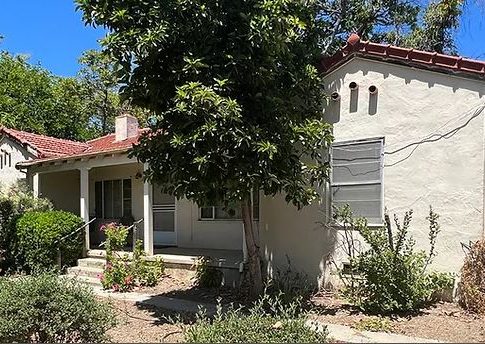By Russell Leung, AsAmNews Intern
A new report finds that U.S. women, especially Asian American women, have made significant gains in closing the homeownership gender gap.
The study, titled A Three-Decade Decline in the Homeownership Gender Gap: What Drove the Change, and Where Do We Go from Here? was released on Tuesday by the Urban Institute Housing Finance Policy Center (HFPC). Using homeownership data from 1990 to 2019, it found that the historical gap between the proportion of male homeowners versus that of women homeowners fell from 20 percentage points to 6 percentage points. In addition, 61 percent of households led by women owned their homes, up 10 percent from 1990.
Jung Choi, an HFPC senior research associate and co-writer of the paper, told AsAmNews that she and co-authors Jun Zhu, an HFPC non-resident fellow, and Laurie Goodman, HFPC vice president, had received numerous requests to study the gender gap after previously publishing research on racial gaps in homeownership.
“If you look at the 1990s, female heads accounted for about one-third of all household heads. Now, it’s almost equal,” Choi said. “There’s a growing trend of females who are becoming heads of the household, and we’re also seeing a huge increase in the homeownership rate of these households. So we wanted to see what’s the reason behind it.”
LATEST STORIES
The report found that women across all racial groups have greater homeownership rates compared to 30 years ago, owing to factors like higher household incomes and the increase in married women as household heads.
Asian American women have achieved particularly strong strides in closing the gender gap. The researchers concluded not only that the homeownership rate for female-headed Asian households increased 18 percent from 1990, but also that Asian Americans have the smallest homeownership gender gap of all women, at 2 percentage points.
When controlling for other factors like income and education, the report further notes, the gap inverts and Asian female-headed households are actually more likely to own homes than their male counterparts.
Zhu told AsAmNews that higher levels of income and education can help account for why Asian women have the narrowest gender homeownership gap. But it was more difficult to explain why the gap flipped when the other factors were controlled.
Choi noted the challenge of explaining this finding due to the diversity of the Asian population; because Asian Americans come from so many different countries, it was difficult to speculate on them as a whole. She and Zhu are conducting further research on specific Asian American groups.

Janice Kato is a Japanese American woman and an example of the growing ranks of Asian American female homeowners. She told AsAmNews that she bought her home in Oakland, California, 32 years ago in part because most of her peers were purchasing homes at the time. She also felt that homeownership was an important milestone in life.
Once Kato graduated from college, she said, house-hunting seemed like a natural next step.
“It was sort of the next thing: going to college, getting married, owning a house,” said Kato, who bought her house when she was 31. “It didn’t look like I was getting married anytime soon, so I thought, well, I better buy the house then, let me focus on that. So I just saved and worked really hard.”
The authors of the report also spoke about their experiences with homeownership. Zhu became a homeowner eight years ago. Like Kato, it felt like she and her husband had reached a certain point in their “life cycle” to buy a home, after they had kids. Choi said she and her husband are seeking to buy a home, but that the search has been difficult. The current pandemic-induced housing shortage, as well as health and safety protocols disrupting the typical process of touring homes and neighborhoods, have been especially tough obstacles for them.
“There’s been a lot of delay,” Choi said. “Hopefully we will become first-time homeowners within this year.”
Despite the report’s overall rosy results, the authors caution that inequities in homeownership still persist. For example, Black homeownership rates decreased overall, as gains by Black women were wiped out by decreases in homeownership for Black men. Other factors such as education and income continue to drive gaps in homeownership, according to the report.
And even though 2019 was just two years ago, the report’s data preceded the COVID-19 pandemic, which will likely erase at least some of the progress made in closing the homeownership gender gap.
That’s because COVID-19 has dealt an especially tough financial blow on women, the authors said. Women often work in the hardest-hit industries, such as retail and hospitality. Childcare responsibilities have also imposed an additional burden on women.
Because many Asian and Hispanic women come from immigrant backgrounds, they have even fewer resources for childcare.
“They don’t really have any relatives or family that can support them during this period,” Choi said. “COVID-19 has created a disproportionate harm on females, especially single females with children who are working in lower-income industries.”
In order to mitigate the financial fallout of the pandemic and further reduce the existing gender gap, the authors recommend a set of policies that could make homeownership more accessible. Flexible mortgage applications, for example, could help potential homeowners more easily secure loans to pay for their houses. Some of these policies are already being tested: Zhu cited a new program by housing corporation Fannie Mae that allows borrowers to use their rental payment history in their mortgage approval process.
“All the policy recommendations we made in the paper, we advocate for those policies, and they are actually getting a lot of attention,” Zhu said. “I think those recommendations will be very good, especially for women.”
AsAmNews has Asian America in its heart. We’re an all-volunteer effort of dedicated staff and interns. Check out our new Instagram account. Go to our Twitter feed and Facebook page for more content. Please consider interning, joining our staff, or submitting a story or making a contribution.









